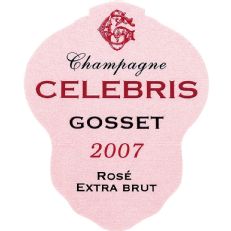Sign In Chef

By using our free meal planner (and the rest of spoonacular.com) you have to agree that you and only you are responsible for anything that happens to you because of something you have read on this site or have bought/cooked/eaten because of this site. After all, the only person who controls what you put in your mouth is you, right?
Spoonacular is a recipe search engine that sources recipes from across the web. We do our best to find recipes suitable for many diets — whether vegetarian, vegan, gluten free, dairy free, etc. — but we cannot guarantee that a recipe's ingredients are safe for your diet. Always read ingredient lists from the original source (follow the link from the "Instructions" field) in case an ingredient has been incorrectly extracted from the original source or has been labeled incorrectly in any way. Moreover, it is important that you always read the labels on every product you buy to see if the product could cause an allergic reaction or if it conflicts with your personal or religious beliefs. If you are still not sure after reading the label, contact the manufacturer.
We also attempt to estimate the cost and calculate the nutritional information for the recipes found on our site. Again, we cannot guarantee the accuracy of this information. Additionally, our nutrition visualizer that suggests that you limit sodium, sugar, etc., and get enough protein, vitamins, and minerals is not intended as medical advice. Similarly, our health tips are based on articles we have read from various sources across the web, and are not based on any medical training. The team behind spoonacular does not possess any medical qualifications and the information may be found to be incorrect or out of date based on future research. If you need help planning your diet or determining which foods (and recipes) are safe for you, contact a registered dietitian, allergist, or another medical professional.
Spoonacular is not responsible for any adverse effects or damages that occur because of your use of the website or any information it provides (e.g. after cooking/consuming a recipe on spoonacular.com or on any of the sites we link to, after reading information from articles or shared via social media, etc.)
×$1.79 per serving

13 likes

Ready in 45 minutes

Spoonacular Score: 56%
Asparagus and Asiago Frittatan is a gluten free, lacto ovo vegetarian, primal, and ketogenic main course. One portion of this dish contains around 17g of protein, 19g of fat, and a total of 261 calories. This recipe serves 4 and costs $1.79 per serving. A couple people made this recipe, and 13 would say it hit the spot. A mixture of olive oil, cherry tomatoes, butter, and a handful of other ingredients are all it takes to make this recipe so flavorful. From preparation to the plate, this recipe takes roughly 45 minutes. It is brought to you by Foodista. All things considered, we decided this recipe deserves a spoonacular score of 49%. This score is solid. If you like this recipe, take a look at these similar recipes: Asparagus and Asiago Frittata, Kale & Asiago Frittata, and Vegetable Frittata with Asiago Cheese.
Frittata works really well with Sparkling Wine. Even if you aren't making mimosas, sparkling wine is great with eggs for two reasons. One, if you're eating eggs early in the day, sparkling wine has less alcohol. Secondly, it cleanses the palate, which is important since yolk is known to coat the palate. The Gosset Celebris Extra Brut rosé with a 5 out of 5 star rating seems like a good match. It costs about 215 dollars per bottle.
 This cuvee is designed to appeal to the most discerning palate and,more generally, anyone looking for a touch of romance in their apéritif. Its freshness, with notes of red fruit (strawberry, raspberry and redcurrant), provides a smooth, comfortable sensation that lingers with hints of pink grapefruit.This champagne can be served as an accompaniment to carefullychosen dishes such as salmon, a strawberry and tomato gazpacho with basil, or panfriedscampi.
This cuvee is designed to appeal to the most discerning palate and,more generally, anyone looking for a touch of romance in their apéritif. Its freshness, with notes of red fruit (strawberry, raspberry and redcurrant), provides a smooth, comfortable sensation that lingers with hints of pink grapefruit.This champagne can be served as an accompaniment to carefullychosen dishes such as salmon, a strawberry and tomato gazpacho with basil, or panfriedscampi.
» Get this wine on Wine.com


































Read the detailed instructions on Foodista.com – The Cooking Encyclopedia Everyone Can Edit